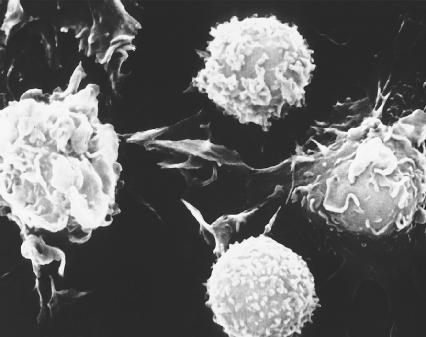Cancer - Diagnosis
The first steps in diagnosing cancer are doing a complete physical examination and getting a medical history. During the physical examination, the doctor looks at, feels, and palpates (applies pressure by touch) various parts of the body. He or she watches for unusual size, feel, or texture of organs or tissues.
Some of the specific symptoms a doctor looks for during such a physical examination are the following:
- Thickening or sores in the lips, tongues, gums, throat, or roof of the mouth
- Tenderness or lumps in the neck
- Swelling or soreness of the lymph nodes in the neck, under the arms, and in the groin
- Sores, itchiness, or bleeding on the skin
- Sores or abnormal discharge from the ovaries, vagina, cervix, or uterus
- Discharge, unevenness, or discoloration of the breasts

- The presence of lumps or unusual masses in the breasts (in women) or in the rectum or testicles (in men)
If the doctor finds any of these signs, he or she may order tests. Some of the most common tests are the following:
- Sputum (material coughed up from the lungs; pronounced SPYOO-tum) is studied under a microscope to look for lung cancer.
- Blood tests can be used to look for tumor markers. A tumor marker is a special type of protein released by cancer cells. Blood tests are also used to follow the course of cancer and to see how well treatment is working.
- Imaging tests help doctors find tumors deep within the body. Most imaging tests use a form of radiation (such as X rays) to look for abnormal masses inside the body.
- A biopsy is the most reliable test for cancer. In a biopsy, the doctor removes a piece of tissue from an abnormal area of the body. The tissue is then studied under a microscope. A specialist can tell whether the tissue is normal or cancerous.
Screening tests are often helpful in detecting cancer at its earliest stages. A screening test is a relatively simple test that should be done regularly. A routine chest X ray is an example of a screening test. Some of the screening tests used for cancer include sigmoidoscopy (pronounced sig-moy-des-ca-pee; inspection of the colon) for colorectal cancer (see colorectal cancer entry), mammography for breast cancer, and a pap smear for cervical cancer.
Genetic testing is a relatively new form of screening that holds great promise. It can help doctors decide when people may be at risk for certain kinds of cancer because of their genetic makeup.
Cancer treatment often requires the work of a team of doctors. At the head of the team is often an oncologist (pronounced on-KOLL-o-jist), a doctor who specializes in cancer care. Other doctors who may work with the oncologist include the following:
- Radiation oncologists, who specialize in the use of radiation to treat cancer.
- Gynecologist-oncologists who specialize in treatment of women with cancer of the reproductive organs.
- Pediatric-oncologists who specialize in the treatment of children with cancer.
- Radiologists, who use techniques such as X rays, ultrasound, and computed tomography (CT) scans to diagnose cancer.
- Hematologists, who study blood disorders.
- Pathologists, who analyze and identify the abnormal tissues that are present in tumors.

Comment about this article, ask questions, or add new information about this topic: